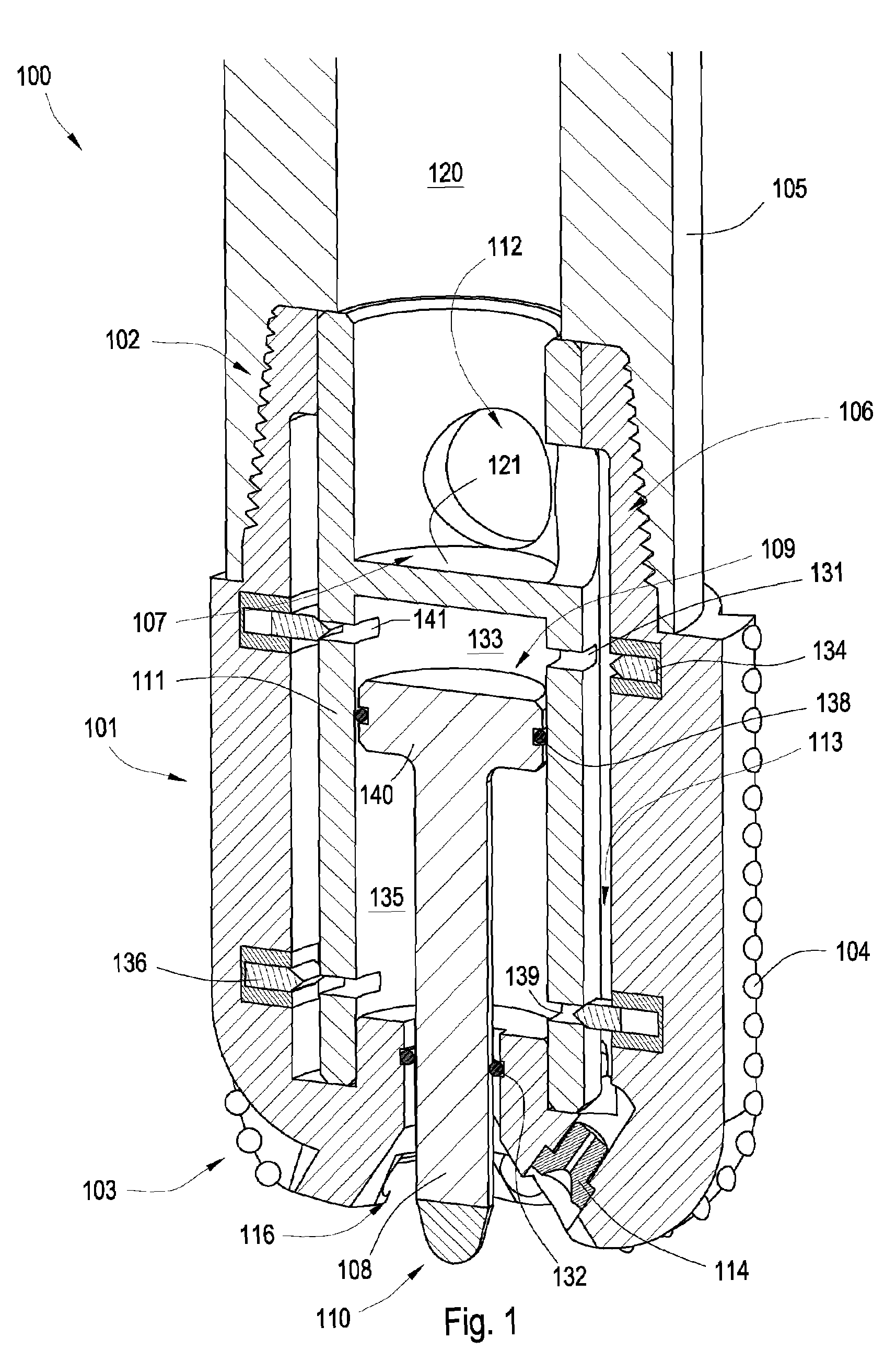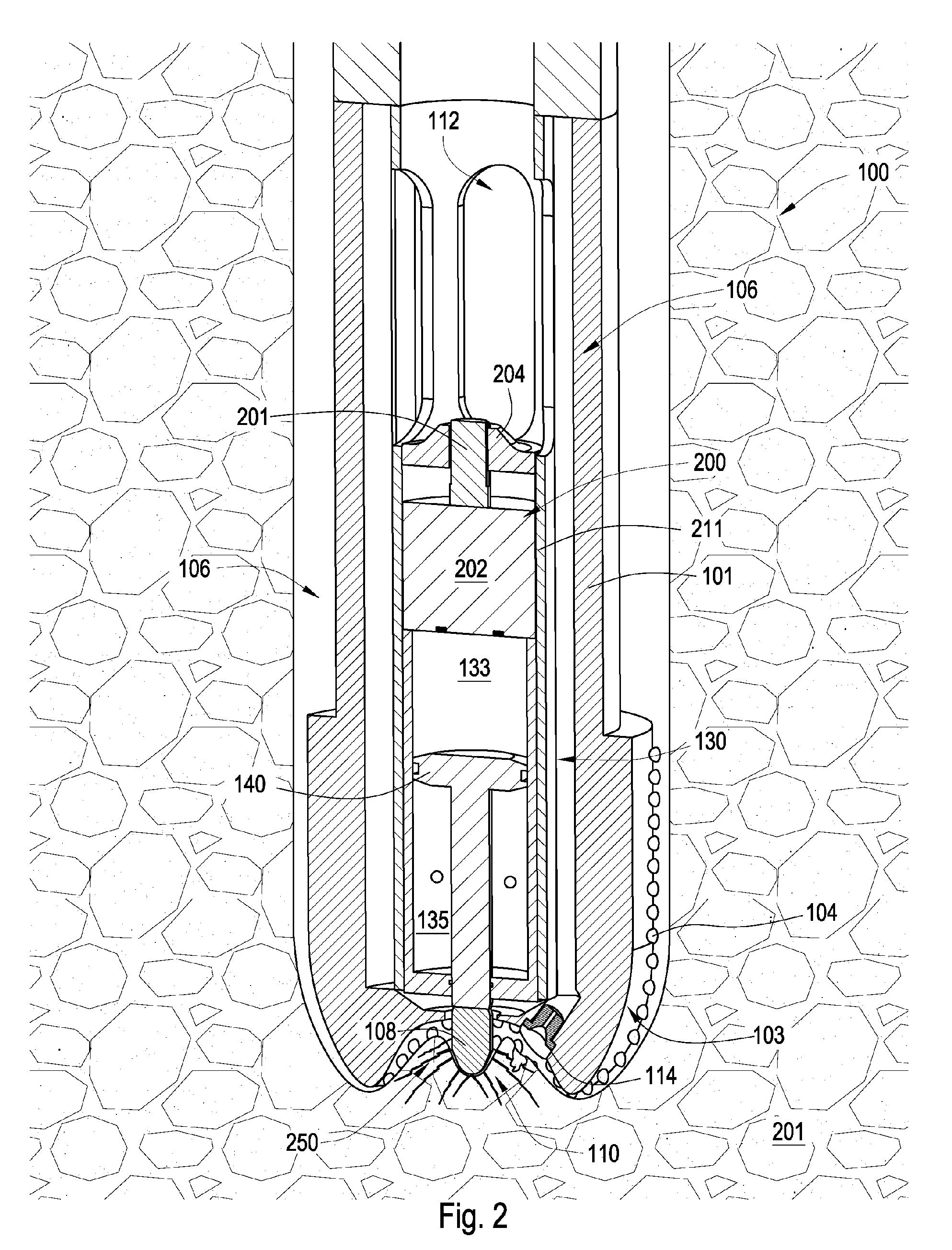Hydraulic drill bit assembly
a drill bit and hydraulic technology, applied in the field of drill bits, can solve the problems of drilling bit damage, drill bit vibration, drill bit damage, etc., and achieve the effects of reducing the vibration of the tool string, reducing the whirl of the bit, and reducing the wear fel
- Summary
- Abstract
- Description
- Claims
- Application Information
AI Technical Summary
Benefits of technology
Problems solved by technology
Method used
Image
Examples
Embodiment Construction
[0039]FIG. 1 is a cross sectional diagram of an embodiment of a drill bit assembly 100. The drill bit assembly 100 comprises a body portion 101 intermediate a shank portion 102 and a working portion 103. In this embodiment, the shank portion 102 and body portion 101 are formed from the same piece of metal although the shank portion 102 may be welded or otherwise attached to the body portion 101. The working portion 103 comprises a plurality of cutting elements 104. In other embodiments, the working portion 103 may comprise cutting elements 104 secured to a roller cone or the drill bit assembly 100 may comprise cutting elements 104 impregnated into the working portion 103. The shank portion 102 is connected to a downhole tool string component 105, such as a drill collar, drill pipe, or heavy weight pipe, which may be part of a downhole tool string used in oil, gas, and / or geothermal drilling.
[0040]A reactive jackleg apparatus 106 is generally coaxial with the shank portion 102 and di...
PUM
 Login to View More
Login to View More Abstract
Description
Claims
Application Information
 Login to View More
Login to View More - R&D
- Intellectual Property
- Life Sciences
- Materials
- Tech Scout
- Unparalleled Data Quality
- Higher Quality Content
- 60% Fewer Hallucinations
Browse by: Latest US Patents, China's latest patents, Technical Efficacy Thesaurus, Application Domain, Technology Topic, Popular Technical Reports.
© 2025 PatSnap. All rights reserved.Legal|Privacy policy|Modern Slavery Act Transparency Statement|Sitemap|About US| Contact US: help@patsnap.com



